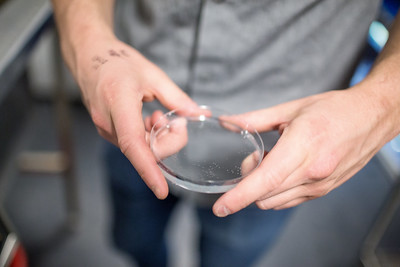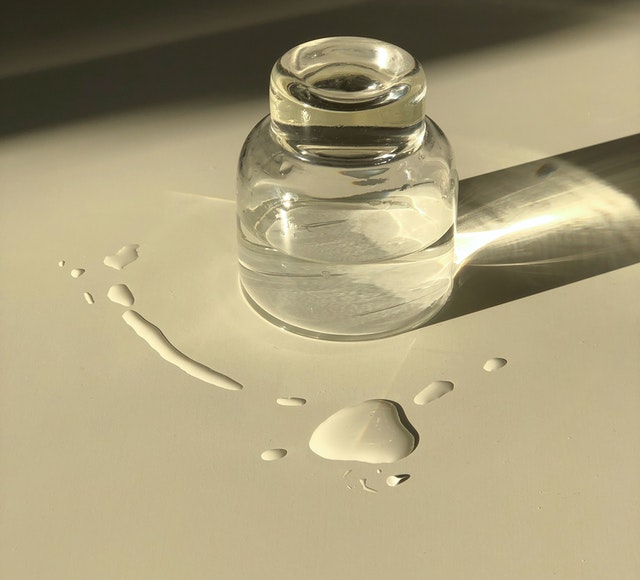Working with genetically modified microorganisms (GMM) and organisms (GMO) requires specific facilities and procedures to ensure that both you, your coworkers, and the environment are safe.
Facilities
The labs at BIO are approved for work with GMM/GMO which requires containment level 1 and 2. Most of the laboratories at BIO are classified as containment level 1, and only a few laboratories are classified as containment level 2. Labs classified as containment level 2 are marked with biohazard sign.
The zebrafish facility is approved for the contained use of genetically modified animals.
As for the other labs at BIO, it is forbidden to eat, drink or store food in the GMO/GMM areas. Lab coats, gloves and appropriate safety equipment must be used in areas where this is specified.
All laboratories where GMOs are used at containment level 2 (cell culture labs) and the Zebrafish facility have restricted access. Doors must be closed at all times and may be opened using the UiB card. Access to the lab is granted by the lab responsible person for the facility; contact this person to get informed about the rules and procedures that apply, and to have your UiB card activated.


Work protocols
Work with GMM/GMO and biological risk factors must be carried out in accordance with good microbiological practices. This means that you must prevent infection between the source of infection and the person by maintaining good hygiene. Equipment’s used should be cleaned “on site” before it’s removed from the laboratory. Good hygiene is important in the laboratory, this means that you should not bring outerwear, bags/purses, mobile phone etc. into the lab that are not cleaned before taken out of a classified lab.
Before a new work routine on GMM/GMO work is implemented, a risk assessment must be produced and documented. Research group leaders are responsible for keeping written work protocols. Protocols are produced to ensure that lab work is done without risk for health and safety, and without damaging the environment. Each user is responsible for adhering to the protocols.

Waste management
- Waste related to genetically modified microorganisms (GMM): in most cases, waste is autoclaved before discarding. Any dry, infected waste may be placed directly in yellow special waste containers (problematic waste, see section 4 – hazardous waste).
- Solid waste such as agar plates must be handled as problematic waste and should be placed into a yellow waste container.
- Small quantities of liquid waste such as falcon tubes, Eppendorf tubes should be handled as problematic waste and collected in yellow waste containers.
- Liquid waste containing GMMs above 1L must first be autoclaved before pouring into a leak proof container (e.g empty ethanol bottles). And then handled as problematic waste (yellow waste container). Nothing should be poured into the sink.
- Waste related to genetically modified zebrafish (GMO): dead zebrafish, larvae and embryos are collected in petri dishes, and placed in the freezer. These are later to be incinerated. In case of spillage of embryos, clean up with paper wipes which are subsequently discarded in the yellow special waste containers. All waste water from the zebrafish facility is pumped through a shared water treatment facility (the Pyramid) for disinfection.
- For GMO fruit flies, follow the internal waste guidelines that apply in the fly lab.

Protocols in the event of spillage and/or accidental release
Spillage containing genetically modified organisms must be cleaned up at once by use of absorbent paper, which is then discarded in yellow special waste containers. The compromised area must be disinfected. Protective gloves must be worn when cleaning up spills. If the compromised area cannot be immediately disinfected, you should:
- mark the area,
- consider closing off the area in order to prevent health risks to others,
- consider calling for help,
- make a note of which biological factor has been spilled / released,
- notify your group leader,
- report the incident as an internal HSE-anomaly (see section 10 - report an HSE-problem).
The Norwegian Directorate of Health must be alerted in all cases where spillage leads to the release of GMO.


